
Issue #: 162
Published: November / December 2018
- Price per issue - digital : 6.20€Digital magazine
- Price per issue - print : 8.50€Print magazine
- Access to Multihulls World digital archives Digital archives
When we are interested in a multihull, we first look at the hulls, the bridgedeck, the cabins or even the stowage capacity… And the standing rigging? It’s nevertheless what holds the mast up, isn’t it? We’re going to take a look at the mast, the boom and their peripherals!
The standing rigging on a multihull differs significantly from that of a monohull. Firstly, taking into account the absence of heel, it is subject to much greater forces. But finally it’s not that complicated to keep the mast upright, as the width of the platform offers well-spaced anchor points. A forestay at the front and two aft-swept lateral cap shrouds. To resist compression the profile is more often than not self-supporting and held by its own tripod rigging consisting of one or more levels of spreaders and jumpers. Other solutions with intermediate rigging exist – they can be useful for supporting a lower forestay. On cruising boats,, the mast manufacturers nowadays see to it that the profile is calculated to break when the load reaches 70 to 80% of the righting moment. In concrete terms, if you fly the windward hull 3 meters above the surface (and you’ve got to go some…) the mast is planned to give way and avoid a capsize. Most cruising multihull builders offer profiles in aluminum. But certain builders, who offer performance-oriented boats present carbon masts in their catalogues…
The most high-performance boats are even equipped with a pivoting rig. We won’t mention wing masts here, but they do exist! The fact remains that the standing rigging, as static (or not) as it is, ages: remember to check it regularly!
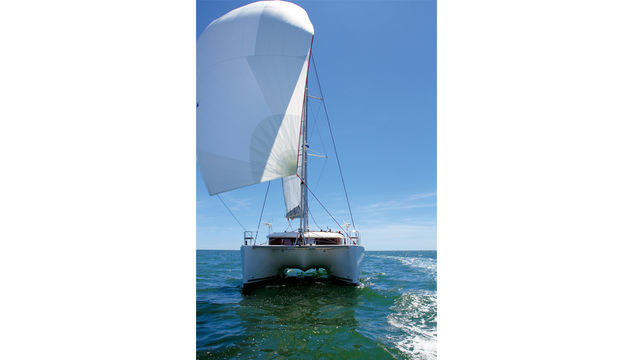
The immobilization of the profile is in principle better guaranteed with two (or even three) levels of spreaders and jumpers than just one. Note the two cap shrouds, well-spaced thanks to the platform’s beam.
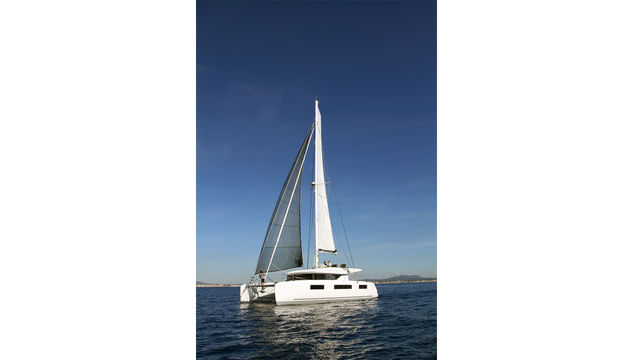
On the new models with rigs positioned further aft, Lagoon has offered a hybrid rig with just one level of spreaders and no jumper, but an extra pair of lowers and two cables dedicated to immobilizing the mast attached at different heights on the profile. A simpler and less expensive arrangement, validated on the smallest models, but not used on the 50.
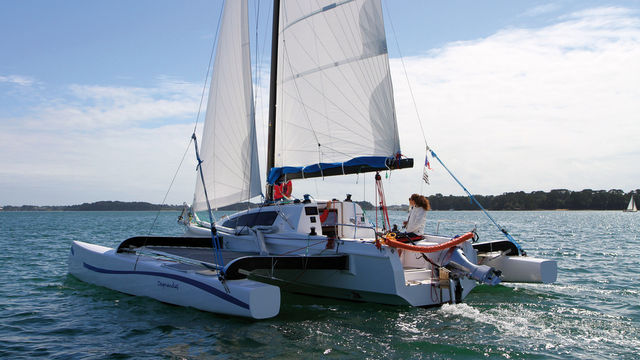
On a trimaran with folding arms, classic rigging with chainplates on the central hull is doubled by two adjustable lower shrouds.
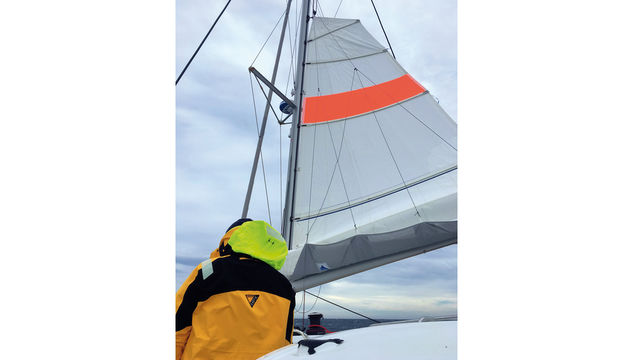
Most mast manufacturers recommend, on immobilized profiles, that you bend the mast by a half profile – 15 cm for a mast whose fore and aft section measures 30 cm. This bend restrains the mast and stops any tendency to move forward.
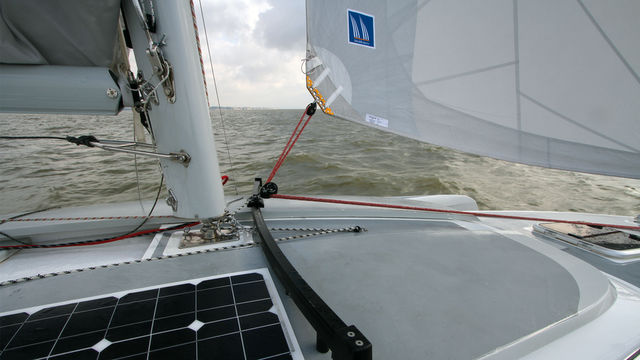
Competition-oriented boats are sometimes equipped with a rotating mast. The self-supporting tube is positioned on a ball-and-socket joint. It follows the angle of the mainsail, for better aerodynamic efficiency. Certain profiles can be controlled by a system of lines via a mast spanner, fixed to the base of the mast.
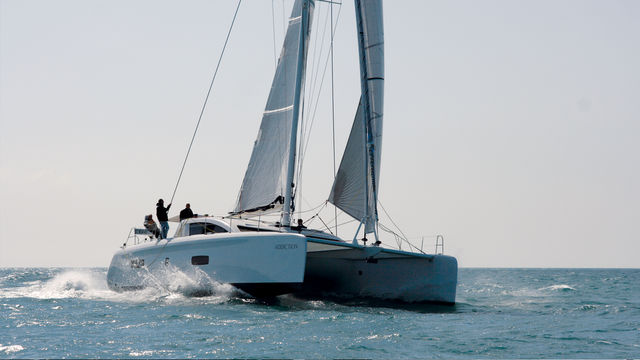
A carbon mast weighs 40% less than an aluminum profile. Giving a saving of 70 kg for a 40-foot catamaran. As a bonus, less pitching and therefore ...
What readers think
Post a comment
No comments to show.